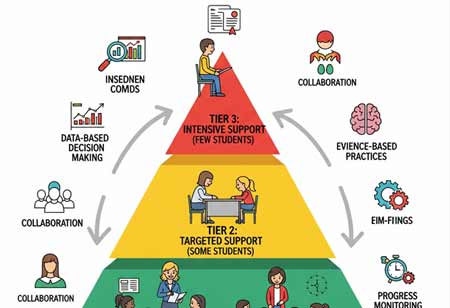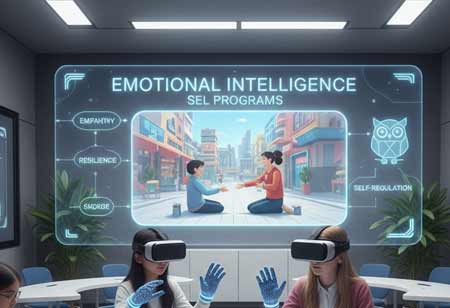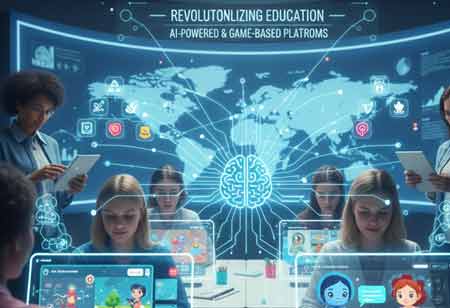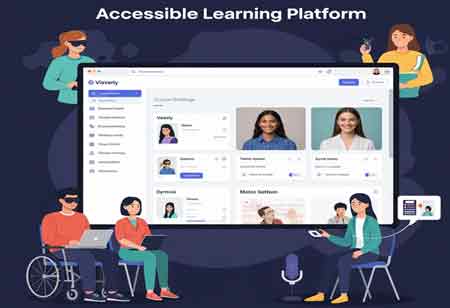THANK YOU FOR SUBSCRIBING
Be first to read the latest tech news, Industry Leader's Insights, and CIO interviews of medium and large enterprises exclusively from Education Technology Insights
Microlearning Meets Mobile Gaming: Bite-Sized Lessons for the Modern, Busy Learner
A shift towards microlearning and mobile gaming emphasizes bite-sized content and gamification, engaging learners and enhancing knowledge retention in today's fragmented work environments.
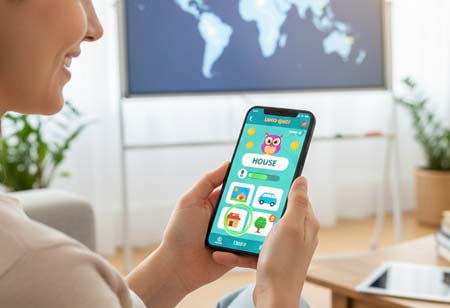
By
Education Technology Insights | Wednesday, October 08, 2025
Stay ahead of the industry with exclusive feature stories on the top companies, expert insights and the latest news delivered straight to your inbox. Subscribe today.
The traditional models of learning and development—comprehensive day-long workshops, dense training manuals, and hour-long e-learning modules—are increasingly at odds with the fragmented reality of the modern workday. Professionals are expected to learn continuously, but finding substantial, uninterrupted blocks of time to do so has become nearly impossible. This friction has catalyzed a fundamental shift in instructional design, leading to the powerful convergence of two trends: microlearning and mobile gaming. This is not merely an incremental improvement; it is a revolution in how to acquire, reinforce, and apply knowledge, creating a learning ecosystem that is both engaging and effective.
The Philosophy of 'Micro': Learning in the Margins
At its core, microlearning is the art of deconstruction. It operates on the principle that complex topics and skills are not monolithic entities but are composed of smaller, interconnected concepts. Instead of presenting learners with an entire library, microlearning offers them a single, relevant book—or even just a single, crucial chapter. It breaks down overwhelming subjects into focused, bite-sized nuggets of information, each designed to achieve a single, specific learning objective. A module might be a two-minute video explaining a key term, a three-minute interactive scenario on handling a customer objection, or a 90-second quiz on new compliance standards.
The genius of this approach lies in its inherent compatibility with the rhythm of modern life. It doesn't require learners to carve out dedicated time; instead, it seamlessly integrates into the small, interstitial moments that pepper our days. These are the "learning margins"—the five minutes waiting for a coffee, the ten-minute commute on a train, the brief period before a virtual meeting begins. By delivering content in short, potent bursts, microlearning transforms these once-unproductive moments into valuable opportunities for skill enhancement. It respects the learner’s schedule and cognitive load, providing just-in-time information that can be consumed and assimilated with minimal disruption to their primary workflow.
The Power of Play: Gamification as an Engine for Engagement
While microlearning provides the structure, mobile gaming offers the engine. Gamification, the application of game-design elements and principles in non-game contexts, is the crucial ingredient that transforms passive content consumption into active, motivated participation. Humans are intrinsically wired to respond to challenges, rewards, and progress. Mobile gaming mechanics tap directly into these deep-seated psychological drivers to foster engagement and create a compelling learning experience.
Elements such as points, badges, and leaderboards provide extrinsic motivation, fostering a sense of competition and public recognition for achievement. Progress bars and leveling systems offer a clear visualization of personal growth, giving learners a gratifying sense of accomplishment as they master new skills. Narrative and storytelling can frame learning content within an engaging context, turning a mundane compliance course into an exciting mission to safeguard a virtual organization.
Most importantly, gaming mechanics provide immediate and constructive feedback. When a learner answers a question correctly, they might receive points and a celebratory sound effect. An incorrect answer isn't a point of failure but an opportunity for a "respawn"—a chance to review the material and try again. This creates a safe space for experimentation and failure, which is critical for genuine learning and long-term retention. By leveraging these elements on the most accessible platform available—the smartphone—organizations can deliver a learning experience that feels less like a corporate mandate and more like a captivating personal pursuit.
Weaving a Web of Knowledge with Spaced Repetition
The ultimate goal of any learning initiative is not just comprehension, but retention. Knowledge that is learned today and forgotten by next week is of little value. This is where the synthesis of microlearning and mobile gaming delivers its most profound cognitive benefit: the seamless facilitation of spaced repetition.
Pioneered by the 19th-century psychologist Hermann Ebbinghaus, the concept of the "forgetting curve" demonstrates that we forget information at an exponential rate unless it is consciously reviewed. Spaced repetition is the scientifically-backed antidote. It involves revisiting information at systematically increasing intervals—for instance, after one day, then three days, then a week, and so on. This process interrupts the forgetting curve and progressively strengthens the neural pathways associated with that memory, transferring knowledge from short-term to long-term storage.
Implementing a spaced repetition strategy alongside traditional learning methods can be cumbersome and difficult to scale. However, a mobile, game-based microlearning platform is perfectly architected to automate this process. An intelligent learning system can track an individual’s performance on each bite-sized module. Suppose a learner struggles with a particular concept. In that case, the system can automatically schedule a refresher quiz or a mini-game on that topic to appear as a notification two days later. Concepts that are easily mastered are revisited less frequently.
This creates a personalized learning journey for each employee. The platform acts as a cognitive coach, intelligently re-introducing content at the optimal moment to ensure it becomes embedded in memory. A "daily challenge" notification may appear, offering a brief, 60-second review of material learned the previous week. This transforms reinforcement from a chore into a simple, recurring interaction that keeps knowledge fresh and accessible, ensuring that the investment in training yields a lasting return.
The fusion of microlearning and mobile gaming represents a paradigm shift from event-based training to continuous, integrated development. It acknowledges the realities of the modern professional by delivering learning that is accessible, flexible, and respectful of their time. It leverages the principles of cognitive science and human psychology to create an experience that is not only effective but genuinely enjoyable. By breaking down complexity, integrating into the natural flow of the day, and using intelligent systems to ensure long-term retention through spaced repetition, this approach is building a more agile, knowledgeable, and capable workforce—one bite-sized lesson at a time.



